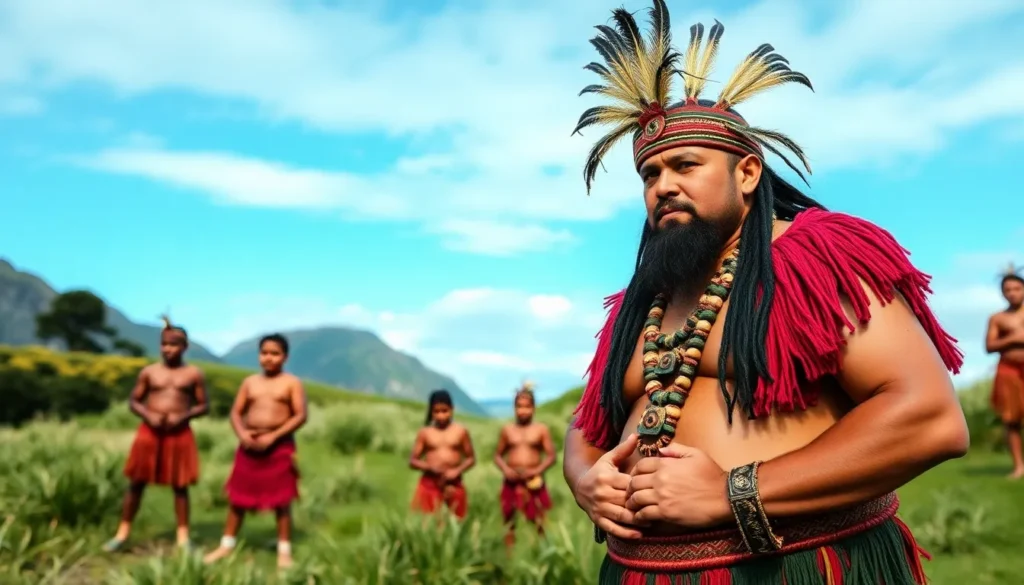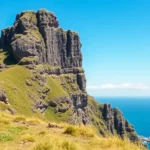Maori culture in New Zealand: characteristics, history, and curiosities

To truly appreciate the rich tapestry of New Zealand, one must delve into the stories and traditions of its indigenous people, the Maori. This post will explore the essence of Maori culture, illuminating its characteristics, history, and fascinating curiosities. Remember, New Zealand is not just a landscape; it is a living history, intertwined with the heartbeat of its Maori heritage.
Understanding the Maori People
The Maori are often recognized as the first settlers of New Zealand, arriving from the Polynesian islands, particularly from a mythical island known as Hawaiki, between the 8th and 12th centuries. They traveled across the ocean in large, traditional canoes called waka. The name they bestowed upon their new homeland is Aotearoa, which translates to "land of the long white cloud."
According to legend, the first Maori arrived while fishing at sea. The youngest among them caught a fish that turned out to be Aotearoa itself, a land filled with majestic mountains, vibrant rivers, and lush forests, prompting them to settle permanently. Another tale speaks of the children of Raki (Sky Father) and Papa-Tu-A-Nuku (Earth Mother) who capsized their canoe, giving rise to the South Island's peaks.
While these stories are steeped in myth, historical evidence confirms that the Maori indeed migrated from Polynesia, establishing a vibrant society that has endured for centuries.
The Structure of Maori Society
Traditional Maori society is organized into whanau (families), which are further grouped into iwi (tribes). Each family traditionally contained five distinct roles:
- Chiefs
- Priests
- Nobles
- Warriors
- Slaves
Maori were skilled gatherers, hunters, and fishers, relying on the land and the sea for sustenance. They hunted native birds, including the now-extinct moa, the largest bird to have ever lived. Interestingly, prior to European arrival, there were no mammals on the islands other than a small bat.
This geographical isolation allowed the Maori to cultivate a distinctive culture that emphasizes a deep spiritual connection to the land. Their society was not without conflict; internal tribal wars were common, and the Maori warrior spirit is legendary, exemplified by the dramatic haka dance performed by the national rugby team, the All Blacks, before matches.
The Arrival of Europeans and the Treaty of Waitangi
The arrival of the pakeha, as Maori refer to Europeans, began in the early 1800s, substantially altering the course of Maori history. In 1840, fifty Maori chiefs, alongside Governor William Hobson, signed the Treaty of Waitangi, a pivotal document that established British governance in New Zealand.
This treaty included several key provisions:
- New Zealand became a British colony; Maori ceded sovereignty to the Crown in exchange for protection.
- Fair trade agreements were assured.
- Guarantees regarding land ownership and the preservation of Maori culture were promised.
Unfortunately, the treaty's implementation was fraught with issues, leading to significant hardships for the Maori people. By the late 19th century, their population had plummeted from approximately 120,000 to about 40,000, largely due to wars and epidemics introduced by European settlers. In 1975, the establishment of the Waitangi Tribunal allowed Maori to lodge grievances regarding treaty breaches, leading to compensation and public apologies from the Crown.
Today, around 15% of New Zealand's population identify as Maori, predominantly located in the North Island. The Maori language is an official language, and many locations owe their names to Maori heritage, such as Rotorua, Taupo, and Aoraki.
In terms of integration, Maori have fared better than many indigenous peoples globally, but challenges remain. There's a growing movement towards the recognition and revitalization of Maori culture, particularly since the mid-20th century. Notably, in 2017, Nanaia Mahuta became the first Maori woman to hold the position of Minister of Foreign Affairs.
Five Enduring Maori Traditions
Here are five vibrant traditions that continue to thrive in modern Aotearoa:
The Haka
The haka is a ritual dance that was traditionally performed before battles to instill fear in enemies and rally warriors. Its significance transcends warfare, embodying the spirit of the Maori people. Today, it is globally recognized, particularly through its association with the All Blacks, New Zealand's revered rugby team.
The Hangi
The hangi is a traditional cooking method rather than a dish itself. It involves digging a pit, heating stones, and placing wrapped food above them, cooking the contents for several hours, resulting in a unique flavor that is distinctly Maori.
Ta Moko
Ta moko refers to the traditional Maori tattoos that adorn the faces and bodies of individuals. Historically crafted with chisels from albatross bones and natural pigments, these tattoos hold deep cultural significance and tell stories of lineage and identity.
Hongi
The hongi is a traditional Maori greeting where two individuals press their foreheads and noses together. This act symbolizes the sharing of breath and life force, fostering a spiritual connection between the people.
Marae
A marae is a traditional meeting place for Maori communities, serving as a venue for ceremonies, gatherings, and celebrations. It is often the heart of Maori social life and culture.
Experiencing Maori Culture in New Zealand
If you're eager to immerse yourself in Maori culture, here are some key locations throughout New Zealand, particularly in the North Island:
- Cape Reinga: This significant spiritual site is believed to be where the souls of the deceased depart for the afterlife.
- Paihia (Bay of Islands): Home to the Waitangi Treaty Grounds, where the Treaty of Waitangi was signed.
- Auckland: The Auckland Museum offers rich insights into Maori history and culture.
- Rotorua: A hub of Maori culture, you can visit the Tamaki Maori Village to experience traditional Maori life.
- Lago Taupo: This stunning location features the Mine Bay Maori Rock Carvings, a remarkable artistic representation of Maori culture.
- Wellington: Be sure to explore the Te Papa Museum, which showcases Maori heritage.
- Kaikoura: Known for its natural beauty, it is also significant in Maori culture.
- Hokitika: Famous for its traditional pounamu (jade), where workshops allow visitors to create their own jewelry.
As you embark on your journey through Maori culture, you will discover a world rich in tradition and history. From their myths and legends to their vibrant arts and crafts, the Maori people offer a captivating narrative that continues to shape New Zealand's identity.
For a deeper understanding, you might find this video enlightening:
We hope this exploration has ignited your curiosity about the Maori culture. There is so much more to learn and appreciate; each facet of their heritage tells a story worth sharing.

Deja una respuesta